The Unsung Heroes of Motion: Mastering Rubber Wheels for Unparalleled Performance
In the symphony of industrial movement, where carts glide, racks traverse, and equipment dances across diverse terrains, one component often sings the most crucial yet understated melody: the rubber wheels. Far more than just a circle of elastomer, the rubber wheels is a masterpiece of material science, a testament to engineered resilience, and the silent partner enabling efficiency, safety, and productivity. As a dedicated caster manufacturer, we understand that the choice of wheels material isn’t merely a specification; it’s a strategic decision impacting your operation’s very heartbeat. This definitive guide delves deep into the world of rubber wheels, unlocking their secrets and empowering you to harness their full potential.
Beyond the Black Circle: Understanding the Essence of Rubber Wheels
A rubber wheels, integrated into a caster assembly (comprising the wheel itself and its mounting mechanism), is the primary interface between your valuable equipment and the ground it traverses. Its core mission? To bear loads, facilitate effortless maneuverability, protect delicate floors, dampen noise and vibration, and endure the unique challenges of your specific environment. Unlike rigid alternatives, rubber wheels bring a dynamic blend of properties to the table:
- Inherent Resilience: Natural shock absorption protects both the carried load and the equipment itself.
- Exceptional Grip: Superior traction minimizes slippage, enhancing safety and control.
- Whisper-Quiet Operation: Significant noise reduction creates a more pleasant and productive workspace.
- Floor Guardian: Gentle on surfaces, preserving expensive flooring investments (wood, tile, polished concrete).
- Versatile Chemistry: Formulations exist to combat oils, chemicals, extreme temperatures, and wear.
Selecting Your Perfect Rubber Partner: The Critical Interrogation
Choosing the optimal rubber wheels isn’t guesswork; it’s forensic analysis. Before diving into rubber subtypes, rigorously examine your application through these essential questions:
- Load Dynamics: What is the total weight (equipment + maximum load)? Is it static, dynamic, or subject to impact shocks? How is the weight distributed?
- Environmental Onslaught: Will wheels face oils, greases, solvents, acids, alkalis, ozone, or UV radiation? What is the operational temperature range (extreme cold or heat)?
- Flooring Ecosystem: What surfaces dominate (smooth concrete, tiled floors, epoxy coatings, asphalt, outdoor terrain, grated metal)? Is floor protection paramount?
- Acoustic & Ergonomic Landscape: Is noise reduction critical (hospitals, labs, offices)? Does operator comfort during pushing/pulling matter?
- Motion Profile: Is movement primarily straight-line, tight maneuvering, or high-speed towing? Are there frequent direction changes or obstacles?
- Specialized Needs: Are certifications required (FDA, NSF for food/pharma, fire resistance, ESD)? Are pneumatic-like properties needed without the flat risk? Is extreme abrasion resistance vital?
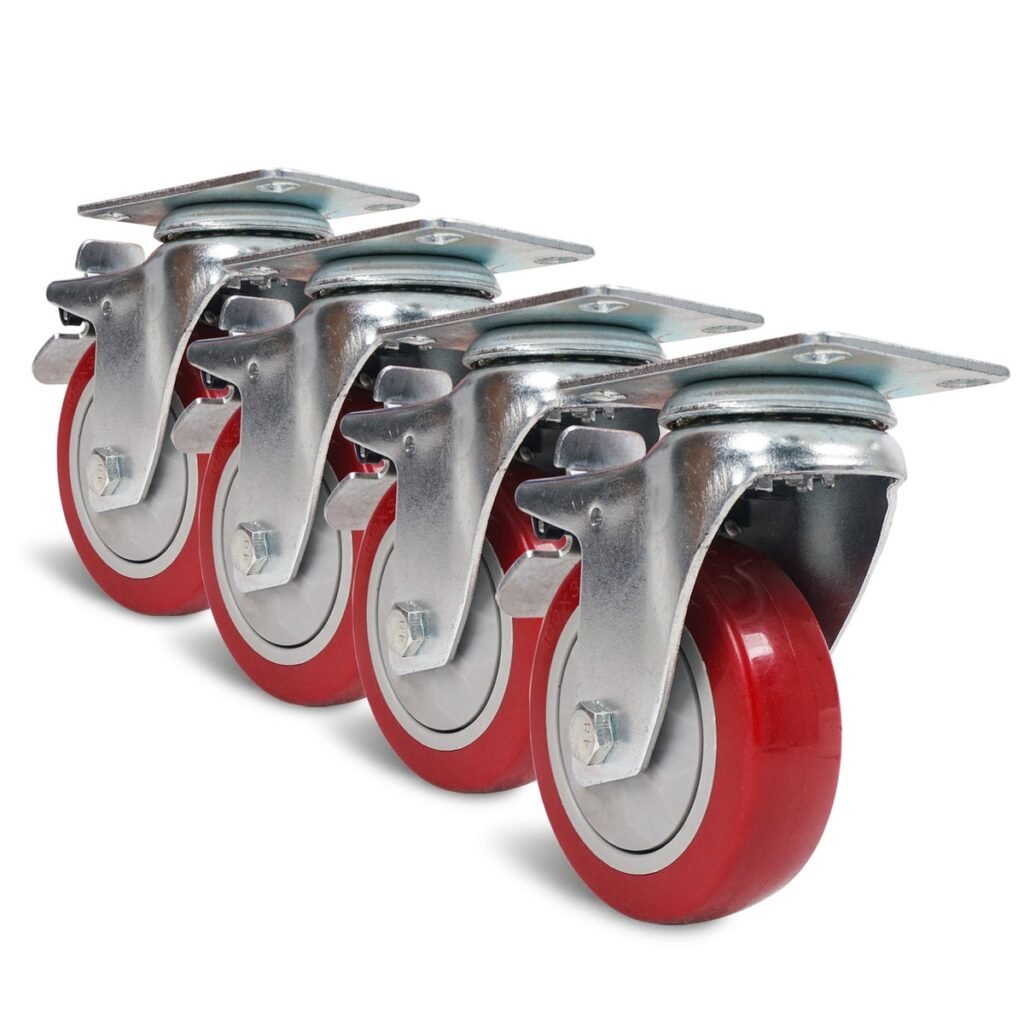
The Elastomer Spectrum: Decoding Rubber Wheels Materials
“Rubber” is a vast kingdom. Understanding its key constituents is vital:
- Natural Rubber (Latex):
- Pros: Outstanding resilience, low rolling resistance, excellent traction (especially wet), good low-temperature flexibility, quiet operation.
- Cons: Poor resistance to oils, fuels, ozone, and UV; degrades faster outdoors; susceptible to swelling in some solvents. Lower max temperature tolerance.
- Ideal For: Indoor applications on smooth floors where oils/chemicals are absent; environments prioritizing quietness and cushioning (hospitals, libraries, light industrial carts). Often used in pneumatic tires.
- Nitrile Rubber (NBR – Acrylonitrile Butadiene Rubber):
- Pros: The champion for oil and fuel resistance. Good abrasion resistance, decent tensile strength. Better heat resistance than natural rubber.
- Cons: Poor resistance to ozone, weathering, and polar solvents (ketones, esters). Stiffer than natural rubber, offering less cushioning.
- Ideal For: Automotive shops, machining environments, factories handling oils/greases, hydraulic equipment carts. The go-to for oily industrial floors.
- Neoprene (CR – Chloroprene Rubber):
- Pros: Excellent all-rounder. Good resistance to oils, ozone, weathering, and moderate heat. Flame retardant. Good abrasion resistance and mechanical strength. Better flexibility than Nitrile at low temps.
- Cons: Not as oil-resistant as Nitrile; not as resilient as natural rubber; can be susceptible to certain solvents.
- Ideal For: Versatile industrial use, outdoor applications (resists weathering), moderate chemical exposure, applications needing fire resistance. A reliable, general-purpose industrial rubber.
- EPDM (Ethylene Propylene Diene Monomer):
- Pros: Exceptional resistance to ozone, weathering, UV, heat, steam, and polar solvents (alcohols, ketones, brake fluid). Excellent electrical insulation. Good low-temperature flexibility.
- Cons: Poor resistance to petroleum oils and fuels. Generally lower tensile strength and abrasion resistance than SBR or Neoprene.
- Ideal For: Outdoor equipment, food processing (resists steam cleaning), chemical plants (handling polar solvents), HVAC units, environments requiring weather/ozone resistance. Common in semi-pneumatic and solid designs.
- Polyurethane (PU/PUR):
- Note: While technically a separate polymer class, PU wheels are often discussed alongside rubber due to similar elastomeric properties and applications.
- Pros: Exceptional abrasion resistance (often 10x better than rubber), high load capacity, excellent cut/tear resistance, good resistance to oils, ozone, and weathering. Wide hardness range. Maintains properties well.
- Cons: Generally higher rolling resistance than softer rubbers, can be noisier on rough surfaces, less resilient/cushioning than softer elastomers, susceptible to strong acids/bases and prolonged hydrolysis (hot water/steam). Higher cost.
- Ideal For: High-abrasion environments (concrete, asphalt), heavy loads, applications demanding long wear life, cleanrooms (non-marking variants), towline systems. Vulkollan is a premium, high-performance polyurethane type.
- Thermoplastic Rubber (TPR/TPE):
- Pros: Combines rubber-like properties with thermoplastic processing ease. Good resilience, low-temperature flexibility, and floor protection. Often highly chemical and water-resistant. Can be easier to color. Good weatherability.
- Cons: Load capacity and high-temperature performance generally lower than thermoset rubbers or PU. Abrasion resistance typically less than PU. Can creep under sustained heavy load.
- Ideal For: Light to medium-duty carts, food service, medical equipment, office furniture, environments needing chemical resistance and easy cleaning. A versatile, cost-effective option.
- Specialized Blends & Compounds: Manufacturers constantly innovate, creating compounds targeting specific needs: conductive rubber for ESD, ultra-high-temp rubber, non-marking formulations, enhanced chemical resistance blends, and eco-friendly recycled rubber compounds.
The Pillars of Performance: Diameter, Width, Hardness & Load
Choosing the right rubber type is only half the battle. Dimensions and physical properties are equally critical:
- Wheels Diameter (Height):
- Larger Diameter: Lower starting and rolling resistance (easier to move), better obstacle negotiation, higher load capacity per wheel, often quieter, smoother ride. Trade-off: Raises equipment center of gravity (potential stability issues), requires more vertical clearance.
- Smaller Diameter: Lower equipment profile (better stability), fits confined spaces, often lighter. Trade-off: Higher rolling resistance (harder to push), less stable on rough terrain, lower load capacity, more susceptible to falling into cracks/gratings.
- Wheel Width (Tread Width):
- Wider Tread: Increased stability (especially side-to-side), higher load capacity, distributes weight better on soft floors, reduces unit pressure (less indentation). Trade-off: Higher turning resistance (especially for swivel casters), potentially higher rolling resistance on very hard surfaces.
- Narrower Tread: Lower turning resistance (improves swivel maneuverability), lighter weight, fits narrower spaces. Trade-off: Lower stability, higher point pressure on floors (risk of marking/indenting soft floors), lower load capacity.
- Hardness (Durometer – Typically Shore A Scale):
- Softer Rubber (Lower Shore A, e.g., 55A-70A): Superior cushioning/shock absorption, excellent floor protection, very quiet, good traction. Trade-off: Higher rolling resistance (especially on hard floors), lower load capacity, more prone to wear/abrasion, susceptible to cutting/gouging.
- Harder Rubber (Higher Shore A, e.g., 80A-95A): Lower rolling resistance (easier to move), higher load capacity, better abrasion/cut resistance, more dimensionally stable. Trade-off: Less cushioning (more vibration/noise transmitted), less traction on smooth surfaces, can mark hard floors if debris is trapped, less forgiving on uneven surfaces.
- Finding the Balance: The ideal hardness balances easy rollability, load capacity, floor protection, noise, and durability for your specific environment and load. Medium hardness (e.g., 75A-85A) is often a versatile starting point.
- Load Capacity: The Non-Negotiable Foundation
- Fundamental Calculation: Total Load Capacity = (Caster Load Rating) x (Number of Casters)
- Safety Factor is Paramount: Always derate! Industry standards often recommend dividing the total loaded weight (equipment + max load) by three (not four) to determine the minimum required load rating per caster. This accounts for uneven floors, dynamic forces (starting/stopping), impact loads, and uneven weight distribution. Example: Total Load = 1200 lbs. Min Load Rating per Caster = 1200 lbs / 3 = 400 lbs. Choose casters rated for at least 400 lbs each.
- Critical Factors Demanding Higher Safety Factors:
- Powered Towing (2-3x normal factor)
- Uneven or Outdoor Terrain (2x factor)
- High Speeds
- Frequent Impact Loads
- Critical Safety Applications (e.g., medical, aerospace)
- Rubber-Specific Consideration: Softer compounds generally have lower load capacities per size compared to harder compounds or PU. Ensure the chosen rubber compound and wheel size support the derated load requirement.
Rubber Wheels Construction: Core Principles & Innovations
The rubber tread is just the outer layer. The core construction defines performance and longevity:
- Solid Rubber: A single, homogeneous piece of rubber molded onto a core (plastic, aluminum, cast iron, steel). Offers excellent floor protection, quiet operation, and good load capacity. No flats. Modern compounds offer impressive resilience. Ideal for: Most indoor industrial, institutional, and commercial applications where maximum cushioning isn’t required.
- Pneumatic (Air-Filled): Features a rubber tire mounted on a metal or plastic rim, inflated with air. Provides superior shock absorption, cushioning, and traction, especially on rough terrain. Drawbacks: Susceptible to punctures, flats, pressure maintenance; higher rolling resistance than solids; potential for rim damage. Ideal for: Outdoor use, rough/uneven surfaces, applications demanding maximum vibration isolation (e.g., sensitive instrument transport).
- Semi-Pneumatic (Flat-Free): Molded with a thick rubber wall surrounding a network of air pockets or a solid, resilient core (often polyurethane or specialized foam). Offers much of the cushioning and traction benefit of pneumatic wheels without the risk of going flat. Lower rolling resistance than pneumatic. Ideal for: Outdoor/indoor transitions, environments with debris where punctures are a risk, applications needing pneumatic-like cushioning with reliability.
- Microcellular Foam: Ultra-lightweight solid wheels made from specialized, highly resilient foam rubber compounds. Excellent cushioning and floor protection, very quiet. Ideal for: Light-duty applications, cleanrooms, noise-sensitive areas. Load capacity generally lower than solid rubber.
- Core Material Significance:
- Plastic (Nylon, Polypropylene): Lightweight, corrosion-proof, economical. Suits light/medium duty.
- Aluminum: Lightweight, strong, corrosion-resistant. Good for medium/heavy duty where weight matters.
- Cast Iron: Very high load capacity, excellent wear resistance on concrete. Heavy, prone to rust if not coated. Classic heavy-duty core.
- Ductile Iron: Stronger and more impact-resistant than cast iron. Excellent for severe service.
- Pressed Steel: Robust and economical. Needs coating for corrosion resistance. Common in industrial applications.
- Stainless Steel: Ultimate corrosion resistance for harsh environments (food, chemical, marine). Premium cost. The core choice impacts overall weight, strength, corrosion resistance, and cost.
The Dance Floor: Rubber Wheels Compatibility Matrix
The perfect rubber wheels harmonizes with its floor. Mismatches lead to premature wear, floor damage, or excessive effort. This matrix provides general guidance (Always test in your specific environment!):
| Floor Type | Natural Rubber | Nitrile (NBR) | Neoprene (CR) | EPDM | Polyurethane (PU) | Thermoplastic Rubber (TPR) | Solid Pneumatic/Semi-Pneumatic |
|---|---|---|---|---|---|---|---|
| Smooth Concrete | Excellent | Excellent | Excellent | Excellent | Excellent | Excellent | Excellent |
| Unfinished Concrete | Good | Good | Good | Good | Excellent (Hard) | Good | Excellent |
| Asphalt (Smooth) | Good | Good | Good | Good | Good (Hard) | Good | Excellent |
| Asphalt (Rough) | Fair | Fair | Fair | Fair | Good (Hard) | Fair | Excellent |
| Ceramic/Porcelain Tile | Excellent | Excellent | Excellent | Excellent | Excellent | Excellent | Excellent (Avoid heavy impact) |
| Vinyl Composition Tile (VCT) | Excellent | Excellent | Excellent | Excellent | Excellent (Soft) | Excellent | Excellent |
| Linoleum | Excellent | Excellent | Excellent | Excellent | Excellent (Soft) | Excellent | Excellent |
| Epoxy Coating | Excellent | Excellent | Excellent | Excellent | Excellent | Excellent | Excellent |
| Finished Wood | Excellent | Excellent | Excellent | Excellent | Excellent (Soft) | Excellent | Excellent |
| Metal Grating | Poor | Poor | Poor | Poor | Fair (Hard) | Poor | Fair (Wide Tread) |
| Outdoor Gravel/Dirt | Poor | Poor | Poor | Fair | Poor | Poor | Excellent (Pneumatic/Semi) |
| Oily/Greasy Floors | Poor | Excellent | Excellent | Fair | Excellent | Good | Good (Nitrile/PU preferred) |
| Wet Floors | Excellent | Good | Good | Excellent | Good | Excellent | Excellent |
| Metal Chips/Debris | Fair | Fair | Fair | Fair | Excellent | Fair | Poor (Punctures) |
Rubber Wheels in Action: Configuration & Maneuverability Nuances
The type of caster (rigid, swivel kingpin, swivel kingpinless) significantly impacts how rubber wheels perform:
- Rigid (Fixed) Casters w/ Rubber Wheels: Provide stable, straight-line tracking. Rubber minimizes vibration transfer. Ideal for long runs on predictable paths. Ensure rubber compound has low rolling resistance if pushing effort is a concern.
- Swivel Casters w/ Rubber Wheels: Enable omnidirectional maneuverability. Softer rubber compounds increase swivel lead (the force needed to start the swivel turning) due to higher friction/grip. Harder compounds or specialized low-swivel-resistance rubber formulations improve responsiveness. Kingpin vs. Kingpinless:
- Kingpin Swivel: Traditional design. The rubber wheels absorbs shocks well, but ensure the kingpin and raceway bearings are robust enough for the load and potential side thrust.
- Kingpinless Swivel: Superior strength and handling of shock loads/side thrust. The rubber wheel’s performance (traction, cushioning) is fully utilized without structural compromise. Highly recommended for demanding applications and powered towing with rubber wheels.
- Configuration Impact on Rubber Performance:
- 2 Swivel (Rubber) + 2 Rigid (Rubber): Most common. Rubber provides consistent traction and noise reduction throughout. Ensure similar compound/hardness for predictable handling.
- 4 Swivel (Rubber): Ultimate maneuverability. Softer rubber increases “squirminess” – swivel locks are highly recommended for straight-line control. Low-swivel-resistance compounds are beneficial.
- Diamond Pattern (4 Rigid Rubber): Cost-effective stability. Rubber ensures smooth rolling and floor protection. Harder compounds often preferred for lower rolling resistance on the fixed path.
Installation, Care & Longevity: Maximizing Your Rubber Wheels Investment
- Proper Mounting: Ensure casters are securely attached according to manufacturer specifications using the correct hardware. Loose mounts cause instability and premature wear.
- Regular Inspection: Check for:
- Cuts, Gouges, Chunking: Especially critical for softer compounds. Remove embedded debris.
- Excessive or Uneven Wear: Indicates misalignment, overload, or improper compound for the floor.
- Cracking (Weather Checking/Ozone Cracking): Look for small surface cracks perpendicular to the direction of stress. Accelerated by UV, ozone, and certain chemicals. Replace if cracks are deep.
- Hardening/Brittleness: Loss of resilience indicates material degradation (age, chemical attack, excessive heat).
- Flat Spots: Can occur from prolonged static heavy loading, especially in heat. Rotate wheels periodically if possible.
- Cleaning: Use mild soap and water. Avoid harsh solvents unless the specific rubber compound is known to be resistant (e.g., Nitrile with hydrocarbons). Remove oil/grease build-up promptly if using non-oil-resistant rubber.
- Storage: Keep in a cool, dry, dark place away from ozone sources (electric motors), direct sunlight, and extreme temperatures. Store off the ground and avoid deforming the wheels.
Beyond the Basics: Specialized Rubber Wheels Solutions
- Conductive & Static Dissipative (ESD) Rubber: Formulated to safely bleed static electricity, protecting sensitive electronics (ESD S20.20 compliant) or preventing sparks in flammable environments.
- Non-Marking Rubber: Ultra-clean compounds (often light-colored) guaranteed not to leave scuff marks on delicate floors (e.g., white TPR/PU).
- High-Temperature Rubber: Specialty compounds (e.g., Silicone, Fluoroelastomers (FKM/Viton® – limited use) or specially formulated EPDM/Neoprene) withstand continuous or intermittent high heat.
- Food-Grade Rubber: Compliant with FDA 21 CFR or EC 1935/2004 standards for direct/indirect food contact. Often white or specified colors.
- Fire Retardant Rubber: Meets specific flammability standards (e.g., UL 94, BS 6853) for transportation or sensitive environments.
- Extreme Abrasion Resistant Rubber: Formulations rivaling some PUs for wear life on harsh surfaces.
- Chemical-Resistant Specialty Rubbers: Tailored for specific aggressive chemical exposures beyond standard compounds (e.g., Viton® for acids/aromatics, Butyl for esters/ketones).
FAQs: Unraveling Rubber Wheels Mysteries
- Q: Why do some rubber wheels crack even when not heavily used?
- A: This is often ozone cracking or weather checking. Ozone (O3), present in air near electrical equipment or smog, attacks unsaturated rubber polymers (like Natural, SBR, Neoprene). UV radiation also degrades rubber. EPDM and certain saturated compounds offer superior ozone/UV resistance. Proper storage helps prevent this.
- Q: Can I use any rubber wheels outdoors?
- A: Not optimally. Standard Natural Rubber, SBR, and Nitrile degrade rapidly outdoors due to UV and ozone. Choose EPDM, Neoprene, Polyurethane, or specialized outdoor TPR for longevity. Semi-pneumatic or pneumatic designs excel on rough terrain.
- Q: My rubber wheels feel “hard” and noisy now. What happened?
- A: Rubber can harden over time due to oxidation (exposure to air/heat), loss of plasticizers, or chemical exposure. This increases rolling resistance and noise while reducing cushioning. It’s a sign of material aging/degradation; replacement is usually needed.
- Q: Are polyurethane wheels better than rubber?
- A: “Better” depends on the need. PU generally excels in abrasion resistance, load capacity (per size), and oil resistance. Rubber (especially softer types) often excels in resilience/shock absorption, noise reduction, floor protection, wet traction, and lower cost. It’s a trade-off, not a strict hierarchy.
- Q: What’s the difference between solid rubber and semi-pneumatic?
- A: Solid Rubber is a continuous elastomer. Semi-Pneumatic mimics the cushioning of air tires using thick rubber walls and internal air pockets or foam cores, eliminating the flat risk but often adding weight and cost compared to solid designs.
- Q: How does temperature affect rubber wheels?
- A: Cold: Increases hardness (durometer), reducing resilience and traction, increasing rolling resistance. Can make some rubber brittle. Heat: Accelerates aging/oxidation, softens rubber (reducing load capacity), increases permanent deformation (flat spotting). Choose compounds rated for your operational temperature range.
- Q: Why is there such a price difference between rubber wheels?
- A: Price reflects raw material cost (Natural Rubber vs. Synthetics, PU), compound complexity (special additives for oil/heat/ozone), core material (plastic vs. iron vs. stainless), manufacturing precision, quality control, brand reputation, and performance certifications.
Conclusion: The Strategic Advantage of Rubber
Rubber wheels are not merely components; they are sophisticated elastomeric solutions engineered to solve complex motion challenges. From the gentle glide of a medical cart across a quiet hospital corridor to the rugged traversal of a service cart over oily factory floors, the right rubber wheels enhances safety, preserves infrastructure, boosts productivity, and extends equipment life.
By mastering the nuances of rubber compounds, dimensions, hardness, construction, and compatibility, you move beyond simple selection to strategic optimization. Partnering with a knowledgeable caster manufacturer ensures access to the right elastomeric technology, precise engineering, and the expertise to translate your operational reality into the perfect rubber wheels solution. Invest wisely in the foundation of motion – invest in the science and performance of rubber wheels.




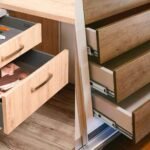
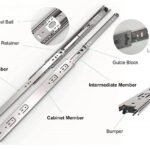
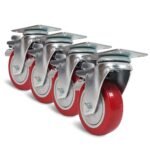
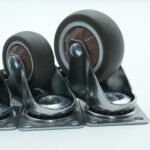
Leave a Reply